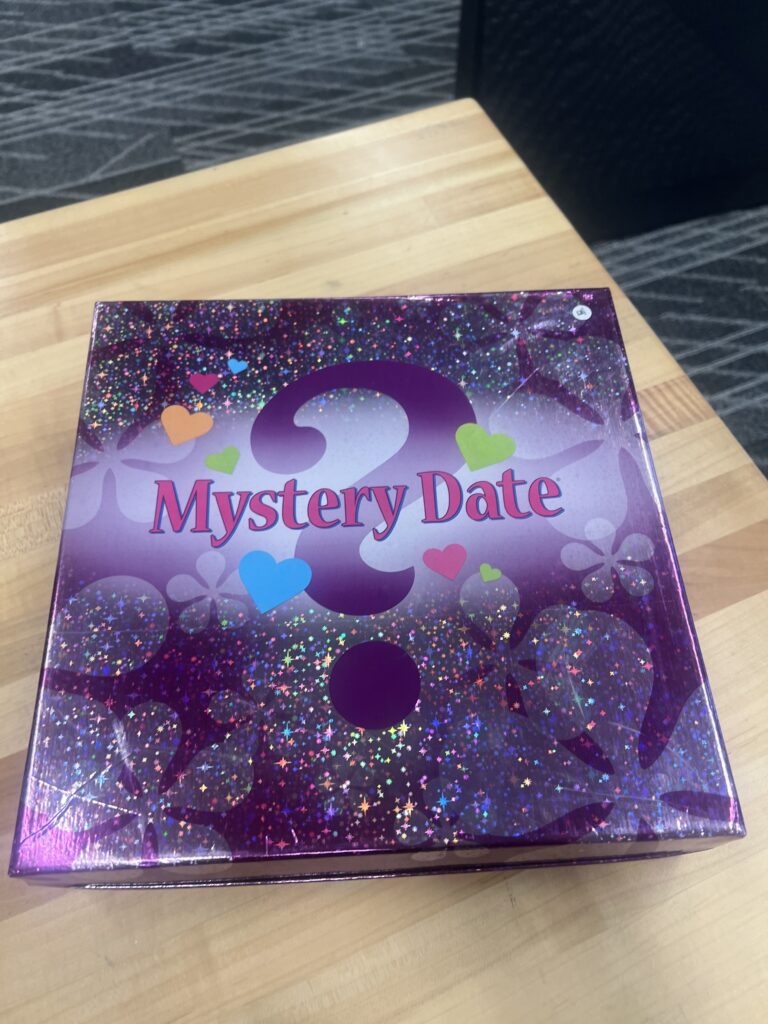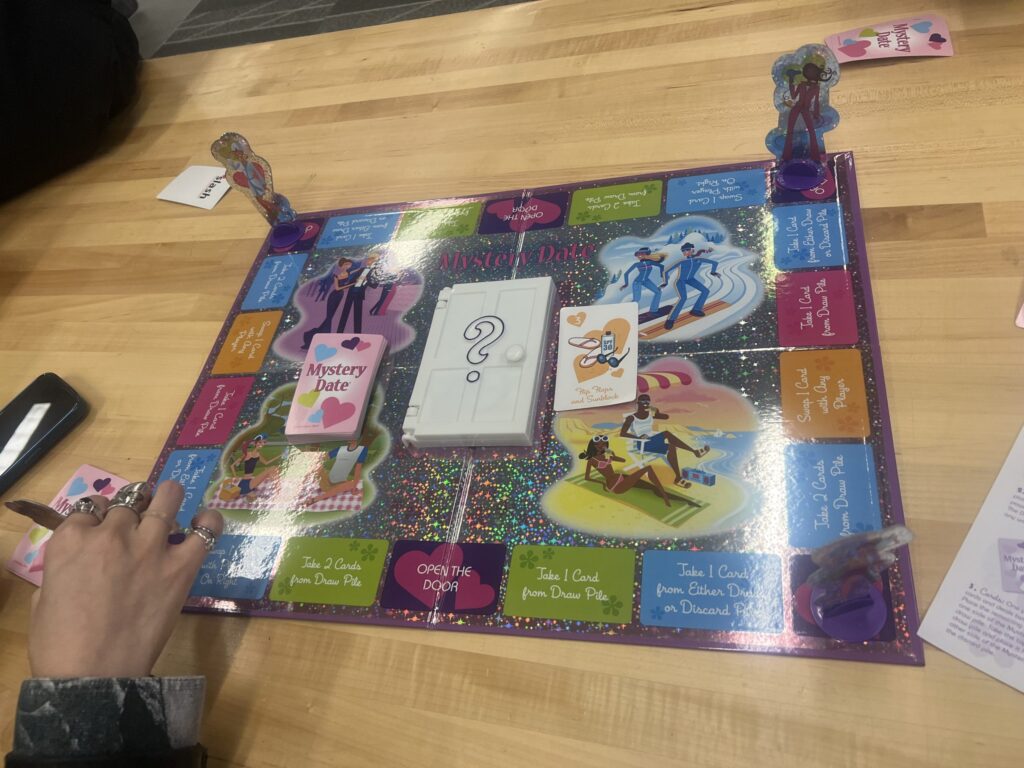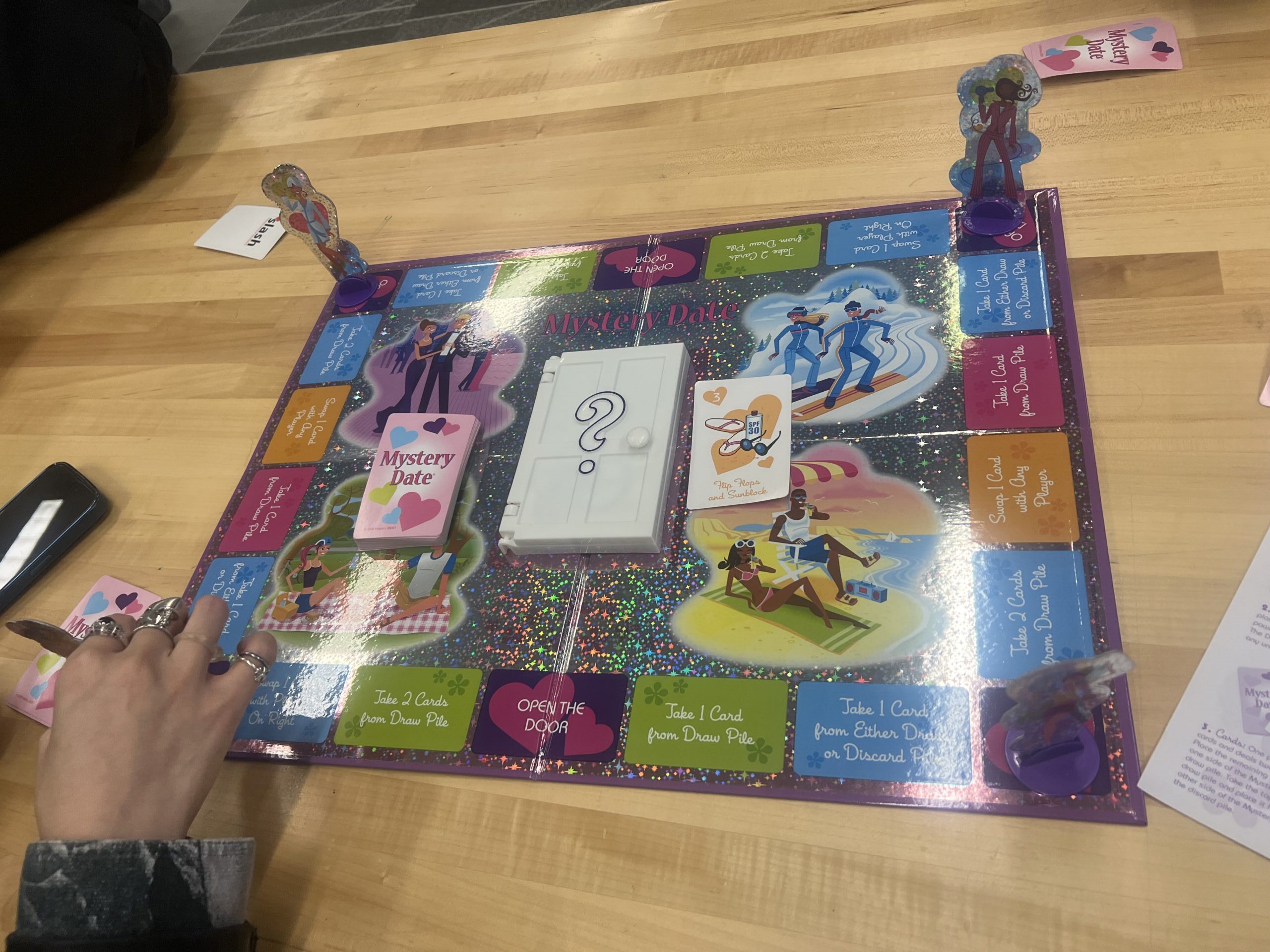I will admit that the excitement that my friend and I felt when we spotted this gem amongst the plethora of games in the MADD center was instantaneous and resulted in 2 minor squeals. We quickly and silently agreed to drop the 3 other games we had been considering playing for this one, which can perhaps be attributed to our mutual love of romcoms, k-dramas, and most media of a similar genre. I had actually only heard of “Mystery Date” via the Christmas movie The Santa Clause, starring Tim Allen. In the movie, one of the adult main characters insists that Santa Clause is not real, but upon receiving the gift she asked for every year as a child–Mystery Date–she is brought to tears and believes in the magic of Christmas again. This is actually a rather brief scene, but it seems to have stuck with me for a long time.
The rules and goal of the game were actually a mystery to me, but before getting into that, the first thing about the game that I believe deserves recognition is the packaging and design of the game board and game pieces. It is far from disappointing, with all of the holographic sparkles I could ever have wanted and a door that kept the mystery dates a giggle-worthy secret.
I played the game with two friends, both of whom were also new to playing the game. The board was lined with a path of spaces that characters travel across, with a few different instructions distributed across the spaces that dictated what action a should player take on their turn. Players roll a 6-sided die to determine how many spaces they should move. The instruction booklet was succinct and easy-to-follow for the most part, and it informed us that we were to try to collect a set of 3 cards made up of different objects for each crush. This allows a player to open the door that hides all of the crushes and attempt to find the crush that matches their cards. The goal is to collect the 3 cards that correspond to the date you like the most and match them to that crush in the door. The door has a handle players must turn before opening the door which determines which crush is behind the door, which is what makes it more difficult, or more random, whether a player can match quickly with their crush and win the game or if they will have to try again.

One thing we noticed about the game that caused an issue for us was that it wasn’t specified whether players could look through and choose the card from the discard pile or if they had to take the card on top of the pile. This was due to lack of specificity regarding syntax. The other potential issue we noticed was that the game was not likely to be as fun for us after we played it once, since the crushes had all been revealed, and no details about them are known besides the 3 elements of their date/outfit. There is a very probably lack of interest without the option to update the crushes to new and exciting options.
The game inspired a surprising amount of competitive and strategic spirit, especially when two of us found ourselves competing for the same crush. We started out the game trying to avoid looking at the different date options, which made it more fun when they were revealed in the end. Despite this, we all seemed to develop one that we were going for one that was our first choice, which was also interesting to experience. I did feel a little strange to be competing over men based almost entirely on looks, but it was also silly and fun to feel like kids with crushes.
One part of the game that I thought played a big role in keeping the play interesting was the fact that you could only have six cards at once. So if you had two full sets and landed on a swap cards tile space, then you would have to choose one card from one of of the potential dates, therefore choosing which crush you like better.

